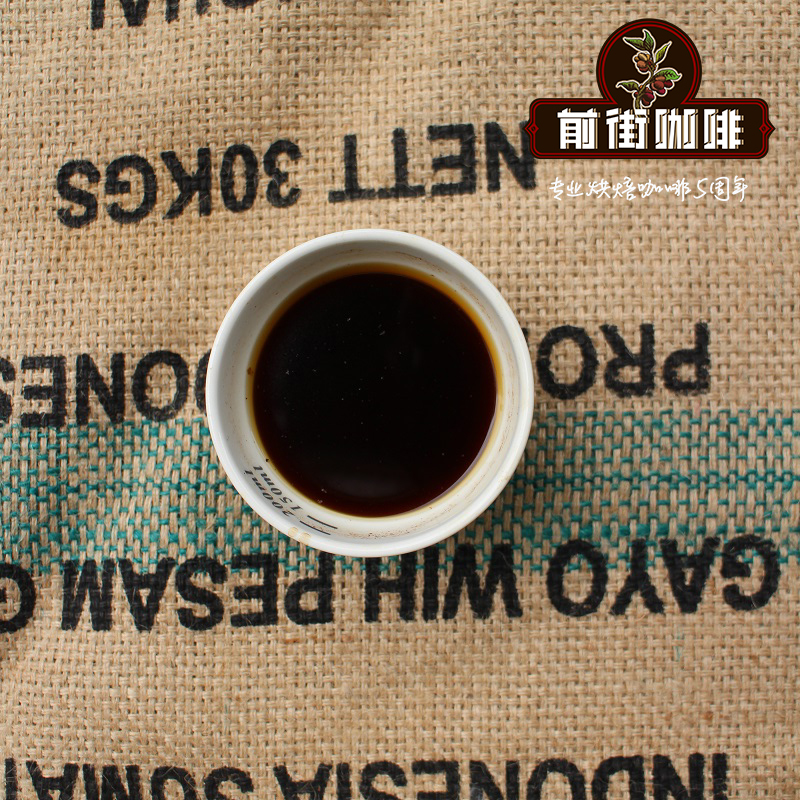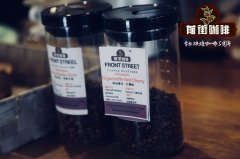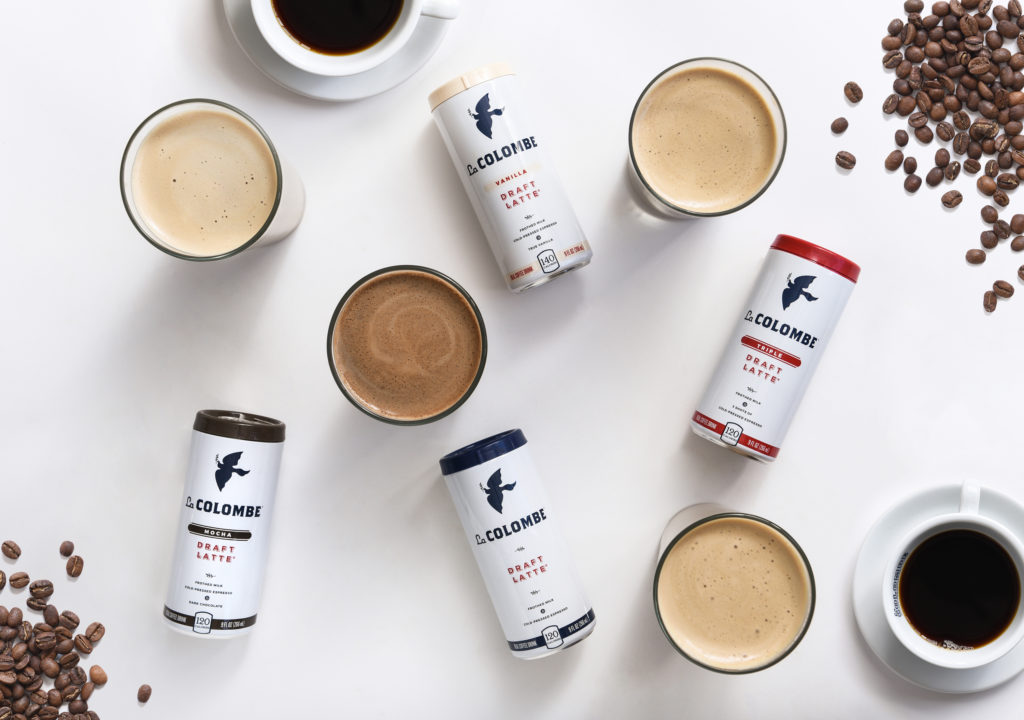How did coffee get into life, and how did coffee become a daily drink?

Professional coffee knowledge exchange more coffee bean information please follow the coffee workshop (Wechat official account cafe_style)
Mocha has nothing to do with chocolate. In 1708, de la Roque and three ships from the French East India Company arrived at the port of Mocha in Yemen, becoming the first French to sail around the southern tip of Africa into the Red Sea. They took the risk and spent a year sailing such a long distance just to buy coffee directly.
Coffee has long been associated with Latin America, but for about 300 years (half of the time since coffee was a commodity), Arabs monopolized the sale of Arabica coffee. What annoys the French most is that the middlemen in the coffee trade are mostly Arabs, Egyptians and Indians. But it won't last long, and Europeans will eventually sweep the coffee trade, making the history of Yemen's exclusive coffee trade a faint and distorted memory, and de la Roque is one of the important drivers of this wave.
Arabica coffee trees originated in Ethiopia, but coffee drinks were developed in the Yemeni city of Mocha around 1400. By 1500, the drink had been found everywhere in the Arabian Peninsula.
The special envoy of the Ottoman Sultan, who arrived in France and Austria in 2008, prepared many of these rare drinks at a luxurious party, thus enhancing the function of coffee in promoting interpersonal communication and status in Europe. The Turks also inadvertently contributed to the popularity of coffee drinks in Europe. In 1683, the Turks besieged Vienna for a long time, and finally withdrew their troops, leaving behind some coffee bags. Later, the owner of the first cafe in Vienna thought of filtering out the sediment of Turkish coffee and adding honey and milk to make coffee more acceptable to Europeans. But Arabica coffee is still a very rare specialty at this time.
Because coffee is expensive. The artificial mode of production in Yemen, the exploitation of middlemen, and the high cost of transportation make coffee almost the same as luxury goods. Before 1690, there were only three coffee-growing areas in Yemen. These areas were located on steep, irrigated hills and were divided into small coffee plantations with only a few hundred farmers.
Farmers bring their own coffee beans from a nearby small coffee garden to the market to sell them all the year round. De la Roque recorded that the harvest was "irregular and irregular, so the Arabs did not know that there was a so-called harvest season". Coffee farmers bring coffee beans to the market six days a week and sell a little more coffee every day than they did the day before; when the price is low, they do not sell it. In the market, Indian businessmen and Arabs control the coffee business. The Dutch and British East India companies have had representatives in Mocha since the early 17th century, and even so, they, like de la Roque, are bought through Indian middlemen who are said to be the best bargainers. Europeans have a low commercial status because they have no political clout, and the only European goods the Yemenis want is Piast coins made of Mexican silver, which they need on the spot.
Encouraged by the results of this voyage, de la Roque returned to Mocha two years later. This time he visited the king of Yemen and found that the king had planted a large area of coffee trees. The Frenchman criticized the king of Yemen, explaining that the king of Europe only grows ornamental plants in the royal botanical garden.
Later, de la Roque greatly regretted the discussion, for when he returned to Paris, he found that his description of Louis XIV's Royal Botanical Garden was wrong. The trader said at the end of his adventure report: "the most appropriate and appropriate conclusion of this report is to mention."... The coffee tree finally came from Holland. "
The coffee tree planted in the Sun King Louis XIV Botanical Garden is a witness to the European colonization of America. Its seeds were taken to the other side of the Atlantic, and it became the ancestor of many coffee trees in America. The French have found a way to break the Arab monopoly on the coffee trade. In less than 50 years, coffee produced on the Latin American island of Martinique (a French colony) gradually replaced mocha in the Cairo market. Yemen can't beat the mass production of the colonies. In 1900, Yemen produced less than 1% of the world's coffee beans, and Mocha's glorious history of 300 years of dominating the global coffee market can now be brought back only by a special drink made with chocolate mixed with coffee from America.
The shift in the role of coffee society as the second largest commodity in the world, coffee has become an integral part of modern life. It is simply unthinkable that the world before coffee was not available. But it took 500 years for coffee to become a delicious drink in your breakfast, and along the way through four continents, it has been given many different roles.
According to legend, an Ethiopian shepherd was surprised to see that his sheep became excited and disorderly after chewing bitter berries, so he picked up the berry and put it in his mouth and jumped around with excitement. He discovered the secret effect of coffee, and it was this secret effect that eventually led to coffee taking root in Yemen and becoming a local crop.
In the middle of the 15th century, Sufi in the Arabian Peninsula found that coffee helped them stay awake when thinking about Allah, so coffee was first favored by Islamic sects. But conservative Islamic theologians feared that its addictive nature would lead people away from the highest level of exploration, so coffee was soon reprimanded by these theologians. In 1511, they burned bags of coffee beans on the streets of Mecca. Later, Turkey's Grand Vizier (Prime Minister) issued a decree that anyone who runs a coffee shop will be punished with a beating, and those who commit another offence will be sewn into the skin and thrown into the Strait of Istanbul.
In Europe, coffee became popular in the 17th century, at a time when commercial capitalism was on the rise. This medieval Middle Eastern bean was transformed into a Western capitalist commodity. It was first introduced to Europe by Venice traders, but those who first traded coffee regarded it as a medicine for eye pain, edema, gout and scurvy. Soon, London traders began to drink coffee in cafes to do business, and the number of cafes as a business center has doubled. Jonathan and Galaville have been the main stock exchanges in England for 75 years, Virginia and the Baltic have served as commercial and maritime exchanges for 150 years, and Lloyd Cafe has become the largest insurance company in the world. The cafe also serves as an office building, a "penny university" to spread the latest news, and the earliest men's club. Coffee promotes business, but it annoys wives who hate that their husbands are addicted to dark, noisy cafes and unanimously attack "this mean, dark, thick, dirty, bitter, smelly, and disgusting muddy water." accuse coffee of impotent men. What King Charles II of England was more worried about was not that going to the cafe might miss a man's family responsibilities, but that those who went to the cafe discussed political affairs, so he set out to close the cafe, but failed.
In Europe, cafes have gradually become a symbol of those who have become rich as a result of the capitalist economy and a place to serve such people. This kind of people constitute the new leisure class, which is later called the cafe society. However, the process of becoming the mainstream of coffee is not plain sailing. There is a heated debate about the medical value of coffee. In Sweden, a pair of twin brothers were sentenced to death for murder. King Gustav III played a fine scientific tradition and experimented on the two death row criminals. He saved them from death, but asked one of them to drink only tea and the other only coffee in prison. As a result, those who drank tea died first (at the age of 83), and Sweden has since become one of the countries with the highest per capita coffee consumption in the world.
Cafes are doing brisk business in capitals. According to Brennan, the popularity of cafes in Paris confirms that "the upper echelons are determined to have their own meeting places and not to mingle with the lower classes." Some cafes, such as Pucco in Paris (the first coffee shop in France), are communication centers for people in literary and art circles, where Voltaire and the like ridicule aristocrats. The Heinrich Hoff Cafe in Vienna brings business inspiration for copper-smelling businessmen as well as creative inspiration for Brahms and other great composers. Other cafes, such as the Mozart Cafe run by my grandmother in Vienna, offer poker, billiards and other more relaxed pastimes. In the leisurely atmosphere of the cafe, great developments are brewing. Illegal cafes are closely related to the birth of civil society, the emergence of public space and the disintegration of the semi-feudal aristocracy. It is not surprising, therefore, that Demulan planned an attack on the Bastille at the Volva Cafe on July 13, 1789 (which some argue is a prelude to the modern world). During the French Revolution, cafes remained the stronghold of action planners and agitators of discontent.
With the rattling factories giving birth to the industrial age, coffee gradually represents not only leisure, but also labor. In the United States, coffee has become a popular addictive drink to help a large group of labor friends hold up their drooping eyelids and evoke gradually distracted eyes. The main role of coffee is no longer a religious meditation or a drink for business or leisure, but an alarm clock in the industrial age.
In the 20th century, coffee was criticized for leading to heart attacks and ulcers, and its refreshing effects were relatively neglected, but its consumption continued unabated. Drinking coffee is not in meditation and enlightenment, not in social situations, but is often bolted whole while driving or in a hurry. From God-given panacea to bourgeois drinks to industrial commodities, coffee has become a workplace drink.
American love of coffee has nothing to do with patriotism. Americans love coffee. For a long time, Americans have been the biggest coffee drinkers. What's more, Americans prefer coffee to tea, and they are often used as a sign of national identity different from Britain. Historians even regard drinking coffee as a noble and patriotic act. Most people agree that the formation of the coffee habit is closely related to the founding of the United States-the people of the 13 states of North America rebelled against the colonial suzerain Britain by drinking coffee.
In the United States, every schoolchild has heard of the Boston tea event. In this incident, anti-British people in North American colonies, dressed as Indians, threw boxes of Chinese tea into Massachusetts Bay to protest against the imposition of tea tax by Britain and the right of the East India Company to monopolize the colonial tea trade. This exhilarating story infuses the American habit of drinking coffee with the glorious pursuit of independence. Unfortunately, this is not true. The motivation for Americans to abandon tea and embrace coffee is greed and profit, not glory and patriotism.
Americans like to drink coffee not out of anti-British mentality, but because of the existence of slavery. Haitian slaves worked in large sugar plantations, producing large amounts of sugar. But self-farmers and free people in Haiti lack the funds to open up sugar cane plantations, so these rural middle classes turn to smaller and lower-cost coffee plantations to sell to the upper class on the island who want to drink coffee in a Parisian fashion. Growing coffee made a steady profit, and soon the output exceeded the local demand.
American businessmen stepped in to help sell the remaining coffee beans. Before that, American traders in New England and Chesapeake had been engaged in triangular trade for a long time. They brought food to feed the Haitian slaves, timber and English products in exchange for island sugar and rum, and then shipped some of the sugar and rum to England for other products. Sometimes the cargo hold of these shipping operators is not full and there is room for them to bring back consignment goods to find new markets. Coffee is resistant to long-distance transportation by sea and decays slowly, making it an ideal product.
As a result, the price of coffee plunged. The price per pound of Arabica coffee dropped from 18 shillings per pound in 1683 to 9 shillings per pound of Haitian coffee handled by British merchants in 1774, and then to 1 shilling per pound of coffee in the United States after independence, making coffee an affordable drink for more people. By 1790, the United States imported 1/3 more coffee than tea. Ten years later, it imported ten times more coffee than tea.
Coffee has become an indispensable part of the American way of life, and this is not so much because Americans hate excessive expropriation in Britain and thus reject the tea that the British like to drink, rather than because slaves have made coffee cheaper and profitable.
Important Notice :
前街咖啡 FrontStreet Coffee has moved to new addredd:
FrontStreet Coffee Address: 315,Donghua East Road,GuangZhou
Tel:020 38364473
- Prev

The evolution of cafes, the culture of cafes?
Professional coffee knowledge exchange more coffee bean information please follow the coffee workshop (Wechat official account cafe_style) the soul of the city, may be hidden in the coffee shop. In 1686, Francois Procope, an Italian Frenchman, opened his own-named Le Procope Cafe near the Opera House in Paris, although it was not the first in France.
- Next

Is the hot [canned nitrogen latte] canned coffee in America the next trend?
Professional coffee knowledge exchange more coffee bean information Please follow the coffee workshop (Wechat official account cafe_style) in the busy life, coffee is a necessary refreshing drink for many people. In addition to freshly ground coffee in coffee shops and convenience stores, in recent years, there are more and more kinds of canned coffee, each with its own characteristics, your choice. Since the invention of ready-to-drink cans of UCC coffee in Japan in 1969
Related
- What brand of black coffee is the most authentic and delicious? what are the characteristics of the flavor of the authentic Rose Summer Black Coffee?
- Introduction to the principle and characteristics of the correct use of mocha pot A detailed course of mocha pot brewing coffee is described in five steps.
- Which is better, decaf or regular coffee? how is decaf made?
- How much is a bag of four cat coffee?
- How about four Cat Coffee or Nestle Coffee? why is it a cheap scam?
- Which is better, Yunnan four Cats Coffee or Nestle Coffee? How about cat coffee? is it a fake scam? why is it so cheap?
- How about Cat Coffee? what grade is a hoax? which instant coffee tastes better, four Cat Coffee, Nestle Coffee or G7 coffee?
- Process flow chart of coffee making-Starbucks coffee making process what coffee tastes good at Starbucks
- The top ten best coffee beans in the world Rose summer coffee or Tanzanian coffee tastes good
- Yunnan four cat coffee is good to drink?_four cat coffee is a big brand? four cat blue mountain coffee is fake?

